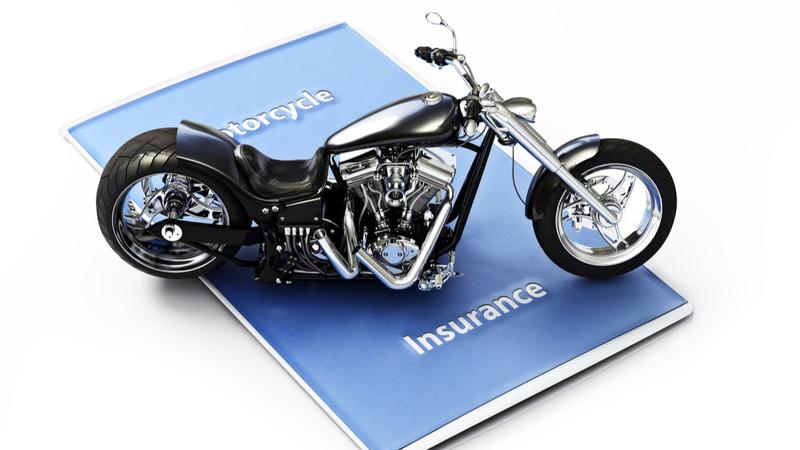Advertisements
Motorcycle insurance is a specialized type of vehicle insurance designed to provide financial protection for riders and their bikes in the event of an accident, theft, or damage. Whether you ride a cruiser, sportbike, touring bike, or scooter, motorcycle insurance ensures that you are covered for liability, medical costs, and property loss related to your motorcycle.
For anyone hitting the open road on two wheels, understanding motorcycle insurance is not just smart—it’s legally required in most states. This article will walk you through what motorcycle insurance is, what it covers, why it’s essential, and how to find the best policy for your needs.
Why Motorcycle Insurance Is Important
Riding a motorcycle carries more risk than driving a car. Motorcycle accidents are more likely to result in serious injury or damage, making proper insurance coverage critical. In addition to being a legal requirement in nearly every state, motorcycle insurance provides financial protection in a wide range of scenarios.
Without it, you may be personally liable for costly repairs, medical bills, legal fees, and damage to property or other vehicles.
What Does Motorcycle Insurance Cover?
Motorcycle insurance policies are highly customizable. Coverage types typically include:
Advertisements
1. Liability Coverage
This is the most basic and legally required type of coverage. It pays for:
- Bodily injury liability: Medical expenses for others injured in an accident you caused
- Property damage liability: Repairs or replacement costs for damaged property
2. Collision Coverage
Pays for damage to your motorcycle resulting from a collision with another vehicle or object, regardless of fault.
3. Comprehensive Coverage
Covers non-collision-related damage such as:
- Theft
- Vandalism
- Fire
- Weather events
- Animal collisions
4. Uninsured/Underinsured Motorist Coverage
Protects you if you’re hit by a driver who has little or no insurance. It can also cover hit-and-run accidents.
5. Medical Payments / Personal Injury Protection (PIP)
Helps cover your medical bills and sometimes lost wages after an accident, regardless of who is at fault.
6. Accessory or Custom Parts Coverage
Provides protection for custom parts and upgrades such as chrome accessories, custom paint, or saddlebags.
7. Roadside Assistance
Optional add-on that covers towing, flat tires, dead batteries, and other breakdown-related services.
High-CPC Keywords Included in This Article
This article includes several high CPC motorcycle insurance keywords to improve its SEO performance and ad monetization, including:
- What is motorcycle insurance coverage
- Cheapest motorcycle insurance quotes
- Compare motorcycle insurance online
- Motorcycle liability vs full coverage
- How much is motorcycle insurance monthly
- Best motorcycle insurance companies
- Motorcycle insurance requirements by state
How Much Does Motorcycle Insurance Cost?
The cost of motorcycle insurance depends on several factors:
- Type of motorcycle: High-performance bikes typically cost more to insure
- Rider’s age and experience: Younger or less experienced riders may pay more
- Location: Urban areas with high traffic or theft rates increase premiums
- Coverage limits and deductibles: Higher limits mean higher premiums
- Driving record: A clean record lowers your rate
On average, motorcycle insurance premiums range from $200 to $800 per year, but this can vary widely based on the factors above.
How to Choose the Right Motorcycle Insurance Policy
1. Assess Your Needs
Think about how often you ride, where you store your bike, and if you’ve made custom modifications. Your answers will help determine the level of coverage you need.
2. Compare Quotes
Use trusted comparison tools or go directly to insurance providers like:
- Progressive
- GEICO
- Allstate
- Dairyland
- State Farm
- Nationwide
3. Check Discounts
Look for available discounts, such as:
- Multi-policy bundling (auto + motorcycle)
- Safety course completion
- Good rider discount
- Low mileage discount
- Anti-theft device installation
4. Read the Fine Print
Make sure you understand your policy’s exclusions, deductibles, and coverage limits. This ensures you’re not caught off guard after an incident.
Do You Need Motorcycle Insurance?
In nearly every U.S. state, motorcycle insurance is legally required if you ride on public roads. Minimum liability coverage requirements vary by state, so check your local regulations.
Even if your state doesn’t require certain coverages like comprehensive or collision, adding them to your policy can provide critical protection—especially if you rely on your motorcycle as a primary form of transportation.
Conclusion
Motorcycle insurance is an essential investment for protecting both your financial well-being and your peace of mind on the road. With various coverage options tailored to different rider profiles and bike types, you can build a policy that fits your lifestyle and budget.
By understanding what motorcycle insurance covers, comparing quotes, and customizing your protection, you can ride confidently knowing that you’re prepared for whatever the road brings. Start by requesting a personalized quote today and take the first step toward safeguarding your ride and your future.
Would you like help finding the best motorcycle insurance quote based on your bike, location, and riding habits? I can assist you in comparing top-rated policies that match your needs.
Advertisements






